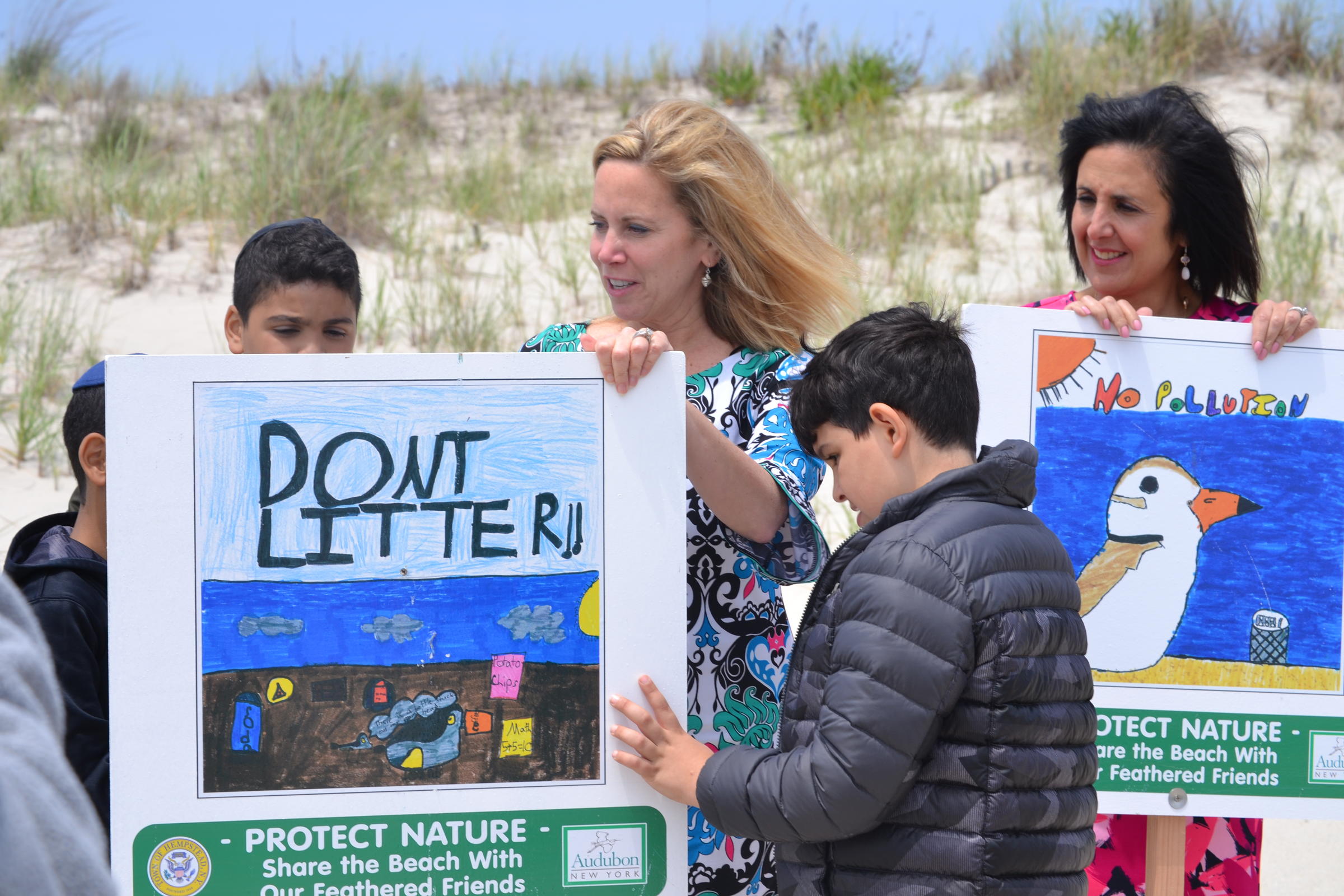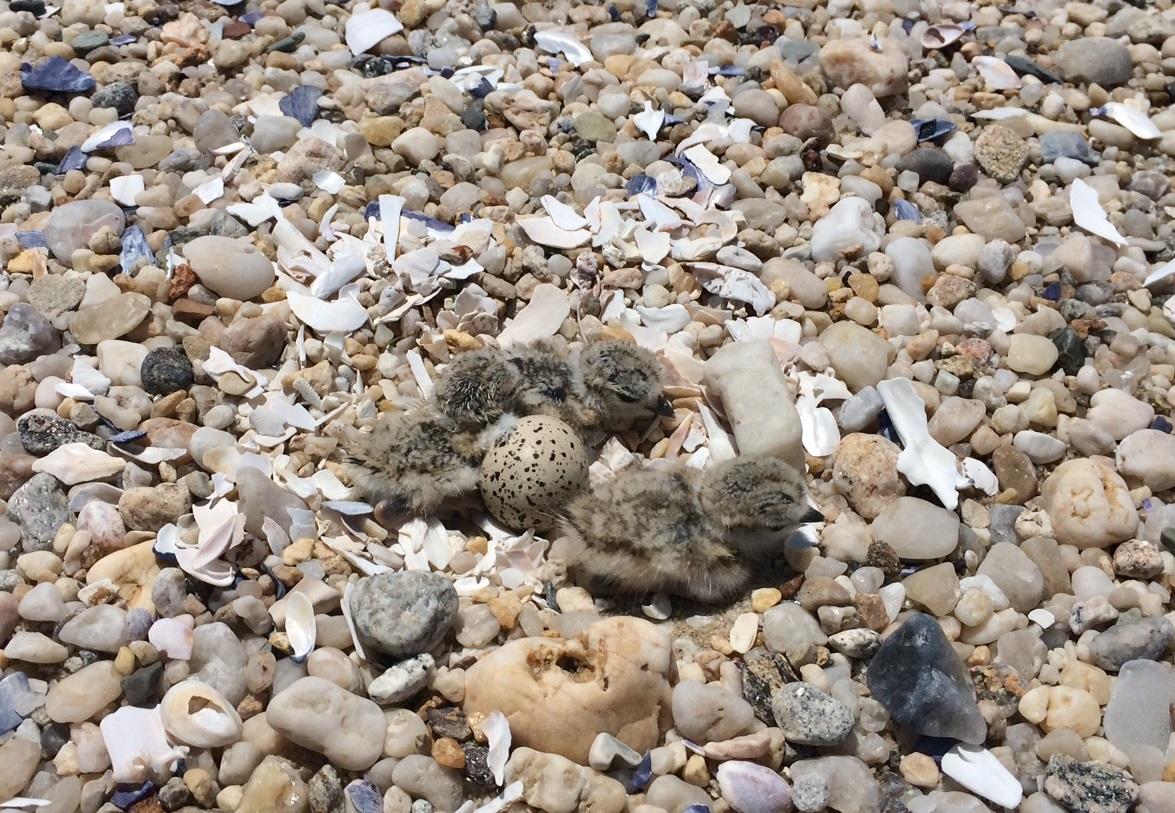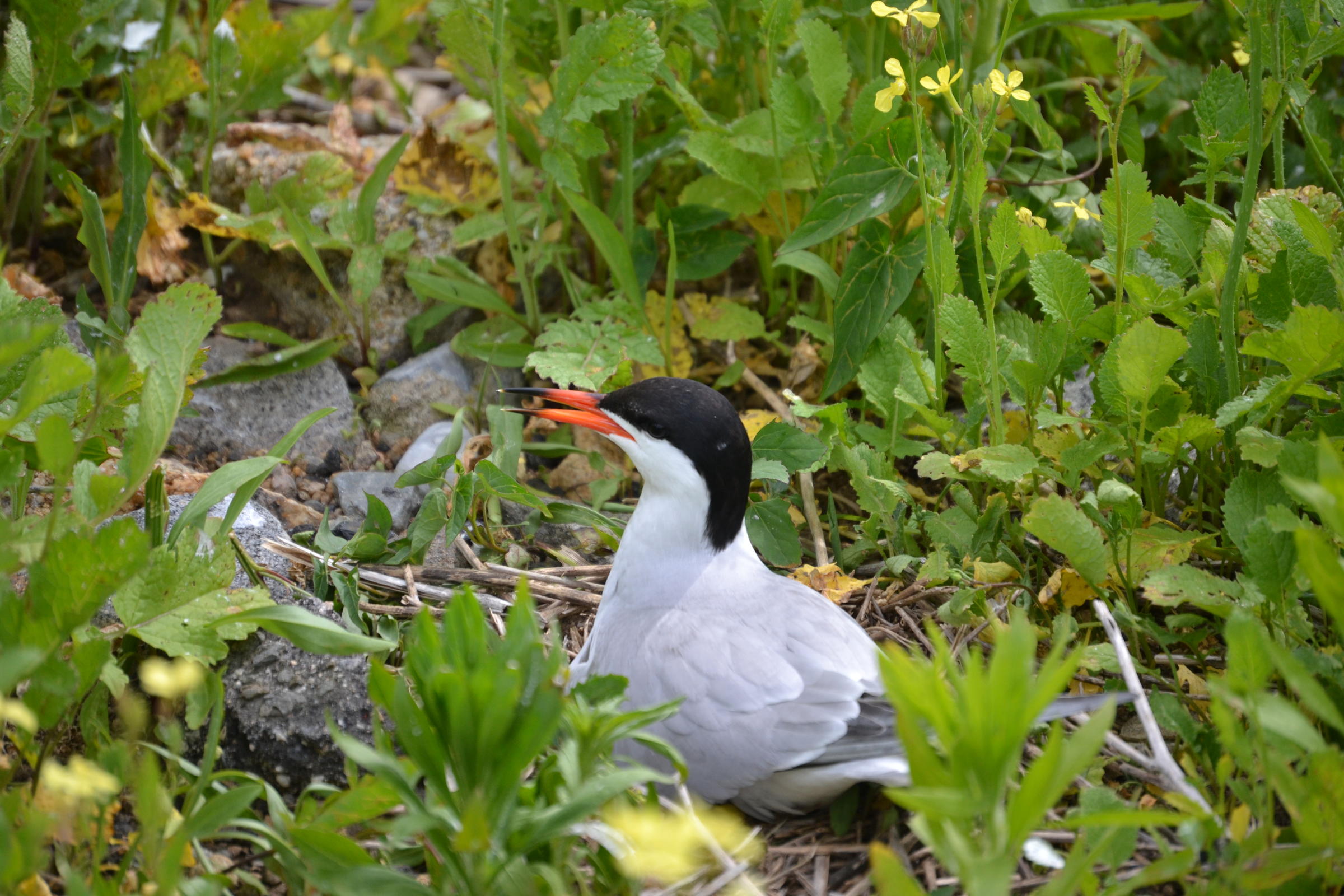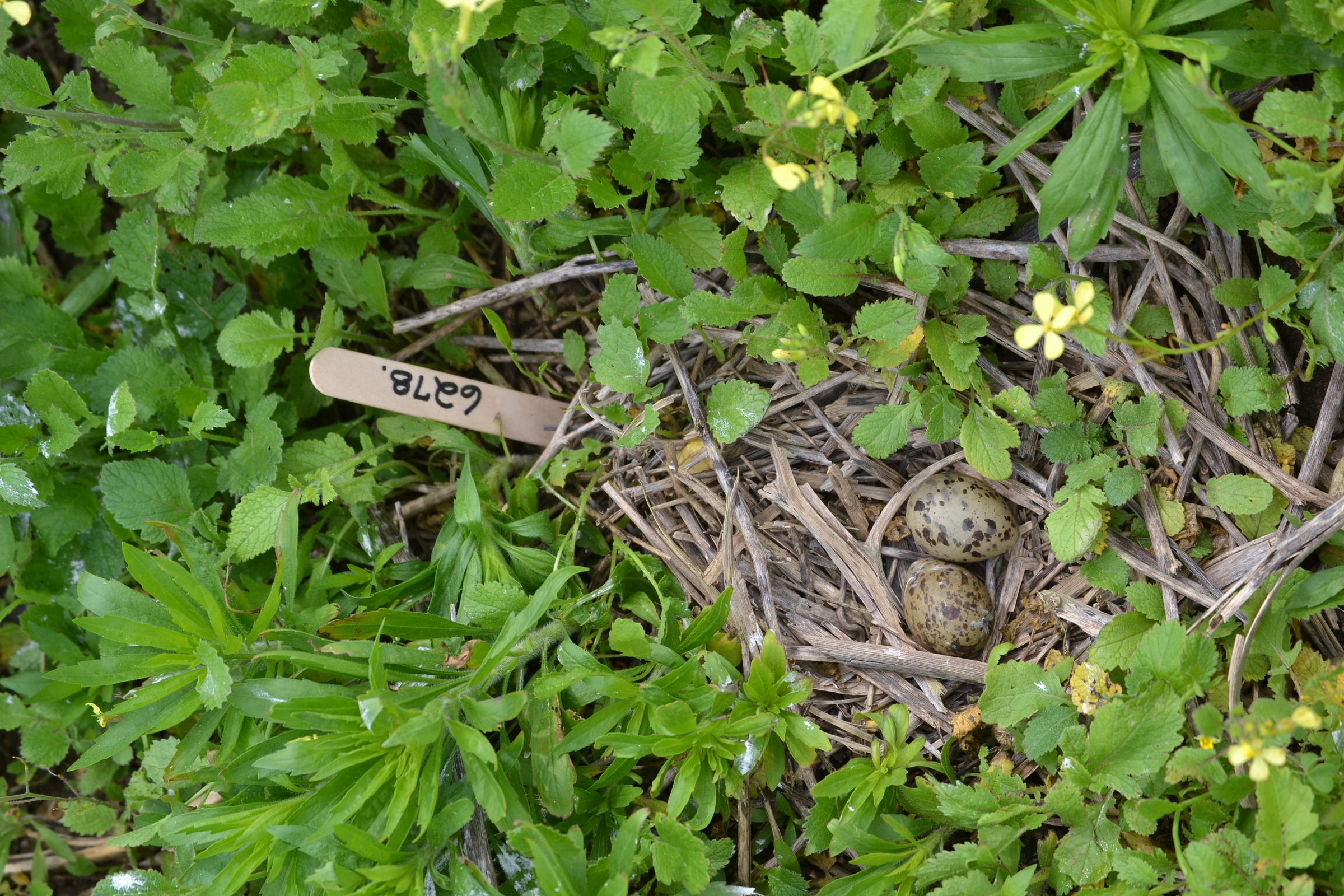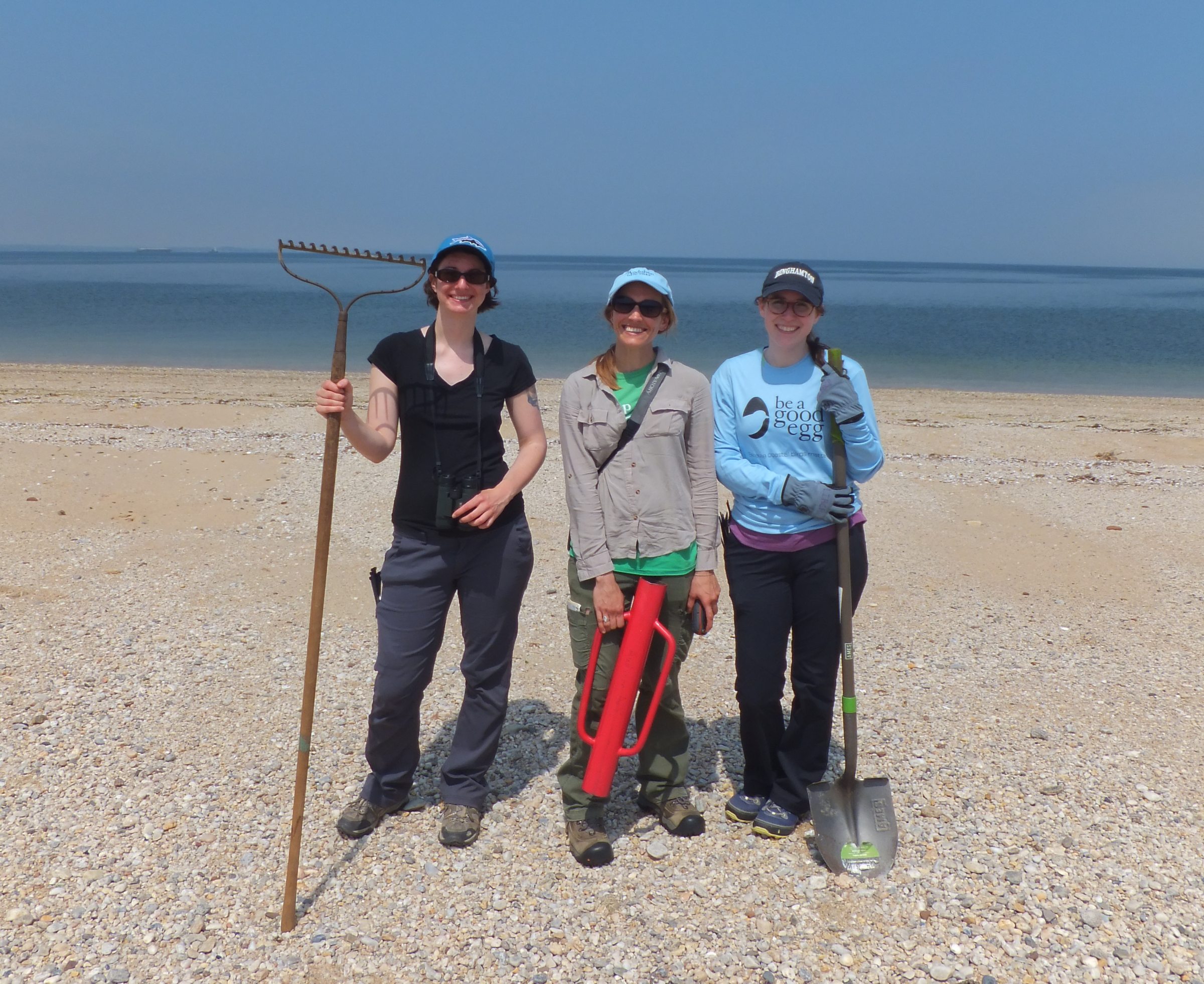2018 was an exciting and productive field season, particularly for New York’s Piping Plovers. On the beaches of Long Island, we monitored a total of 17 pairs of Piping Plovers with an average productivity of 1.41 chicks fledged per pair, which is an increase from 1.00 productivity in 2017. On the shore of Lake Ontario, one Piping Plover pair fledged four young – this was the first time in over 30 years that we have seen such success with nesting in this area!
We began our season during spring migration, conducting shorebird disturbance surveys for Piping Plovers, American Oystercatchers, Red Knots, and Semipalmated Sandpipers, in partnership with Virginia Tech University and local land managers. Fall migration surveys are ongoing.
Over the course of the summer Audubon New York led six hands-on conservation events including beach clean-ups, symbolic fence installation, tern shelter building, and a nest mapping day trip to Great Gull Island.
Our work to monitor and steward these vulnerable bird species and their nesting sites, plus conduct public outreach, was made possible by the help of wonderful volunteers – 85 in total on Long Island and four who helped with Piping Plover monitoring on Lake Ontario – as well as partner organizations, local Audubon chapters, seasonal interns, and community members. With their help, Audubon New York held 16 outreach events, targeting beach-goers at 9 sites on Long Island.
The outreach initiative, Be a Good Egg, was also expanded thanks to our various partnerships: Group for the East End held four outreach events at Breakwater Beach (also known as Mattituck Inlet); Fire Island National Seashore installed a new Be a Good Egg display at their Otis Pike Wilderness Visitor Center; NYS Parks helped us set up new Be a Good Egg displays at Sunken Meadow and Jones Beach State Parks; and the Town of Hempstead helped us to organize several Be a Good Egg events as well as a lifeguard training for new Town of Hempstead lifeguards. Human disturbance is the greatest threat to beach-nesting birds, and these events are an important way to spread awareness and encourage people to #ShareTheShore. In total, 2,450 beach-goers signed the Be a Good Egg pledge this year.
Education efforts also took place within the classroom – we led shorebird education lessons at three elementary schools and over 200 students participated in our annual “share the shore” sign design contest. Of those students, 45 students’ winning designs were printed into weather-resistant signs that we installed at local beaches.
Thank you to CSX, the Schumann Foundation, and the National Fish and Wildlife Foundation’s Long Island Sound Futures Fund for providing funding for our work.






